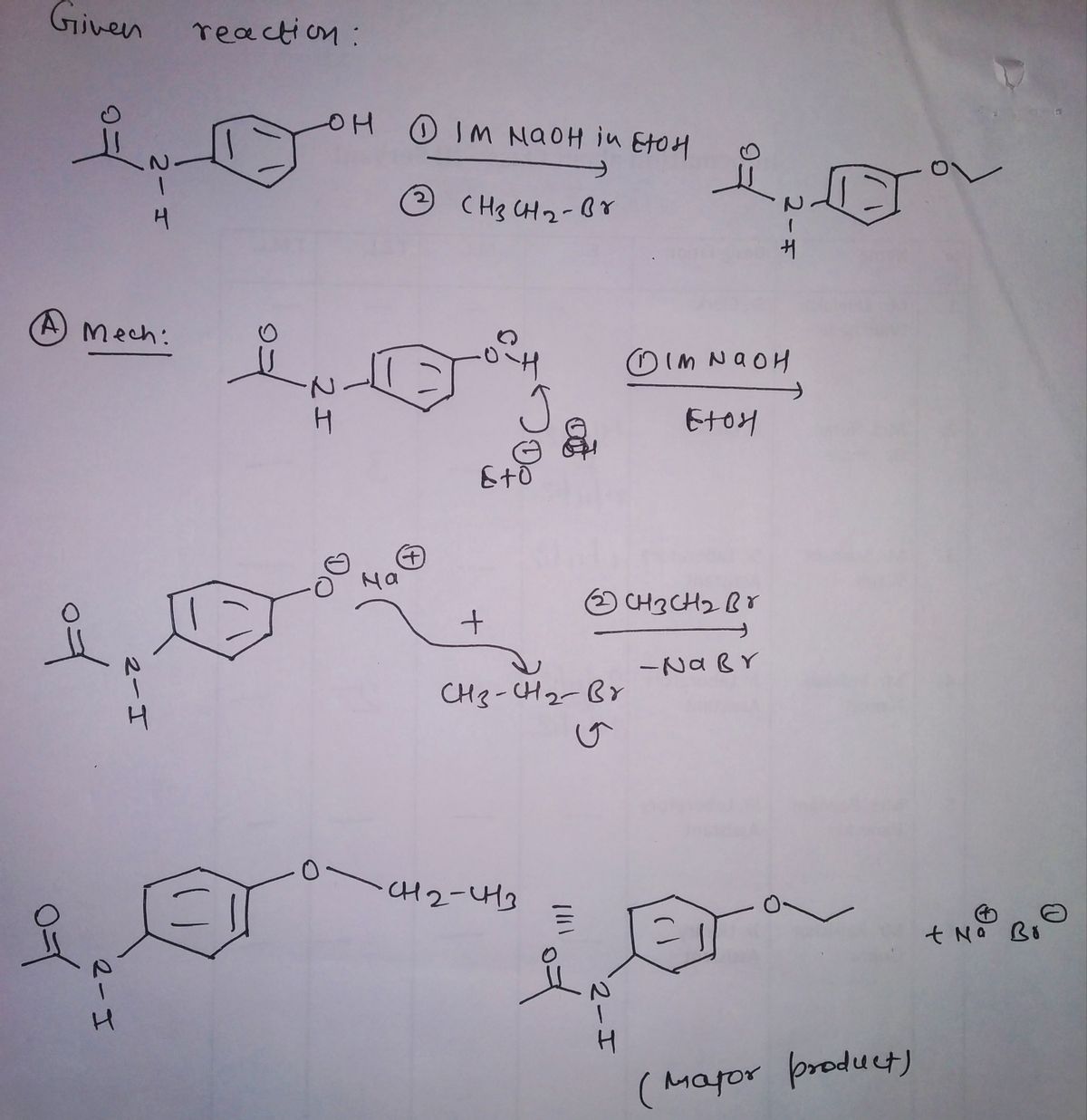Reaction: A Williamson ether synthesis' involves an alcohol and an alkyl halide reacting to form an ether. The first step is the deprotonation of the alcohol using a sufficiently strong base. In this experiment, the base used will be sodium hydroxide which has been dissolved in ethanol. The resulting alkoxide, a phenoxide in this case, attacks the alkyl halide in an SN2 fashion. The final product, phenacetin, is soluble in ethanol but insoluble in water, which will allow it to be purified before analysis. OH 1. 1M NaOH in EtOH H 2. СH3CH2-Br H Na* Br
Reactions of Ethers
Ethers (R-O-R’) are compounds formed by replacing hydrogen atoms of an alcohol (R-OH compound) or a phenol (C6H5OH) by an aryl/ acyl group (functional group after removing single hydrogen from an aromatic ring). In this section, reaction, preparation and behavior of ethers are discussed in the context of organic chemistry.
Epoxides
Epoxides are a special class of cyclic ethers which are an important functional group in organic chemistry and generate reactive centers due to their unusual high reactivity. Due to their high reactivity, epoxides are considered to be toxic and mutagenic.
Williamson Ether Synthesis
An organic reaction in which an organohalide and a deprotonated alcohol forms ether is known as Williamson ether synthesis. Alexander Williamson developed the Williamson ether synthesis in 1850. The formation of ether in this synthesis is an SN2 reaction.
Can you answer all the parts to this question please
A: Draw the mechanism for this synthesis. (please draw clearly)
B: Explain why order of addition is so important in this reaction.


Trending now
This is a popular solution!
Step by step
Solved in 2 steps with 2 images









